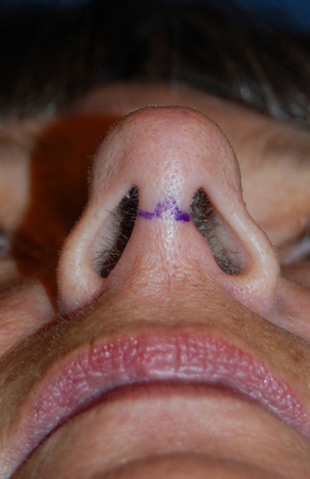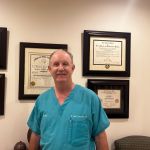Rhinoplasty Techniques
Dr. Freeman is Featured In

People visit facial specialist Dr. Sean Freeman for various rhinoplasty techniques and surgery from all over the United States and fly in from around the world. If you are considering cosmetic rhinoplasty, you can benefit from learning more about the techniques he uses when performing this procedure. Dr. Freeman is one of America’s most experienced rhinoplasty surgeon.
Nose skin varies in thickness, from moderate at the top, to thin in the middle and thick toward the tip. This is important because, typically, the thicker a patient’s skin, the thinner the underlying support cartilage, and therefore, the more aggressive the surgery required to create a satisfactory shape in the tip.
To learn more about rhinoplasty, request a consultation online or call Dr. Freeman’s office at (704) 543-1110.
Dr. Freeman is one of America’s most experienced rhinoplasty surgeons. He is certified by both the American Board of Otolaryngology (ENT) and the American Board of Facial Plastic and Reconstructive Surgery, so he’s especially skilled at improving both the form and function of the nose. Patients who have previously undergone a nose job and are dissatisfied with their results trust him with their complex cases.
Cartilage
During rhinoplasty the cartilage that is typically adjusted to improve the shape of the nose is the upper lateral and the lower lateral cartilage and the septal cartilage. The shape of the lower lateral cartilage directly affects the shape of the nasal tip. The shape of the upper lateral cartilage influences the width of the supratip and allows for tip rotation as well as being important for the nasal valve.
The cartilage underneath the upper lateral and above the tip is part of the septum. Cosmetically, this portion of the septum is changed to allow for tip rotation and to decrease or increase the size or the nose above the tip. The nasal bones themselves are then brought into harmony with the rest of the nose. Typically, the surgeon will make an incision to narrow the lateral base and bring the medial bones toward the midline.
Incisions
Rhinoplasty is usually performed with incisions made inside the nose where they cannot be seen. This technique is called a closed rhinoplasty. With this approach, swelling will resolve more quickly after surgery versus doing an open approach. Dr. Freeman also feels he gets better feedback using the closed approach. He gets better feedback because rhinoplasty is the art and science of knowing how to change the shape and position of cartilage and bone of the nose under the skin and by leaving the nasal skin envelope intact, he can see what he is creating more precisely. Finally, open rhinoplasty leaves a visible incision so if you can avoid that it’s a good thing.
For patients who need a significant change in the projection of the tip, however, open rhinoplasty is sometimes performed. This approach is also used for most revision rhinoplasties. Open rhinoplasty requires an incision across the columella at the base of the nose between the nostrils. Because of its location under the nose, it generally heals without creating aesthetic concerns. This approach also affords the surgeon more visibility of the internal structure. The downside to this approach is that it tends to increase postoperative swelling.

Specific Improvements
Reducing a Nasal Hump Without Changing Tip Rotation or Projection
This is generally a closed rhinoplasty procedure. A surgeon can improve the nasal tip by trimming a portion of the lower lateral cartilage and using a suturing technique to help refine the tip. The structures above the tip – the upper laterals, the superior edge of the septum and nasal bones – are then reshaped to bring them into harmony with the tip. Finally, the surgeon makes cuts at the lateral base of the nasal bones.
Reducing a Nasal Hump and Rotating the Nasal Tip
This type of rhinoplasty also is also usually performed with a closed approach. The main difference from the above procedure lies in the treatment of the tip and the edge of the septum closest to the upper lip. The surgeon may also remove a small triangular portion of the lower lateral cartilage to rotate the tip slightly toward the forehead. If needed, an additional rectangular piece of cartilage placed behind the lower lateral cartilage may help support the tip. Moreover, the septum may be shortened toward the lip – again, to help provide tip rotation. The bottom or caudle edge of the septum is used to support changes of projection/rotation of the tip.
Reducing a Nasal Hump and Deprojecting the Tip With or Without Rotation
This procedure may require an external incision, depending on the degree and cause of the tip projection. Deprojecting the tip (bringing it closer to the face) may require removing a portion of the lower lateral cartilage around the tip area and re-creating the tip. The surgeon may also change the position of part of the septal cartilage, shortening it toward the lip.
Improving a Twisted Nose
One of the more difficult rhinoplasty procedures, this usually requires an open approach. Cartilage grafting, repositioning of the superior portion of the septum and changing the location of the nasal bones are all part of the equation.
Changing the Shape of the Nostrils
Also known as alar rim surgery, this is a secondary procedure performed after primary rhinoplasty for two reasons: First, because it cannot be reversed, it requires precision. Second, no rhinoplasty surgeon can make an accurate prediction of the ultimate shape of the alar rims following a rhinoplasty. Any change in the size of the tip will change the shape of the alar rims. Dr. Freeman typically waits about 3 months after a primary rhinoplasty to decide, along with the patient, whether this second step should take place. About 1 in 10 patients will benefit from this step. The procedure takes place under local anesthetic. Post-op bruising is usually absent, and swelling is minimal. One of two procedures is used (or more commonly a combination of both): Weir excisions improve flaring of the nostril, and nasal sill incisions narrow the base of the nostril.
Rhinoplasty With Chin Implant
Having specialized in facial plastic surgery since 1988, Dr. Freeman often sees patients who complain about the size of their nose when the major problem is the size of their chin. A chin implant can greatly complement rhinoplasty. About 1 in 5 patients who have rhinoplasty should consider a chin implant to improve facial balance. Patient satisfaction with chin implants is high; and the implant can be easily removed if the patient changes their mind, but this is rare. Dr. Freeman inserts a chin implant through a small, well-hidden incision under the chin.
Dr. Freeman’s Makeovers
Request A Consultation
Contact Us
Newsletter Sign Up
Only Faces
Center for Facial Plastic and Laser Surgery
Dr. Sean Freeman – Charlotte’s Top Facial Plastic Surgeon, 11220 Elm Lane #101, Charlotte, NC 28277
Phone: 704-543-1110


